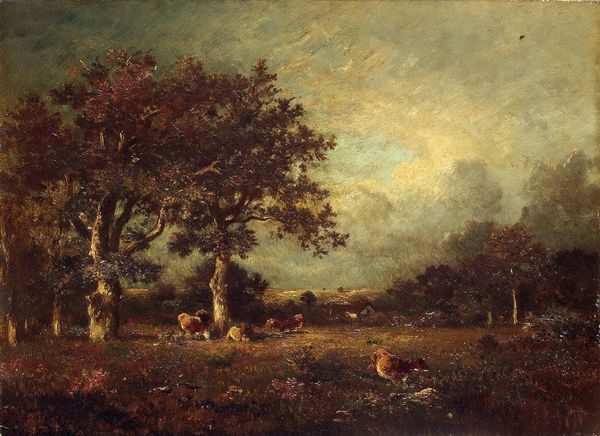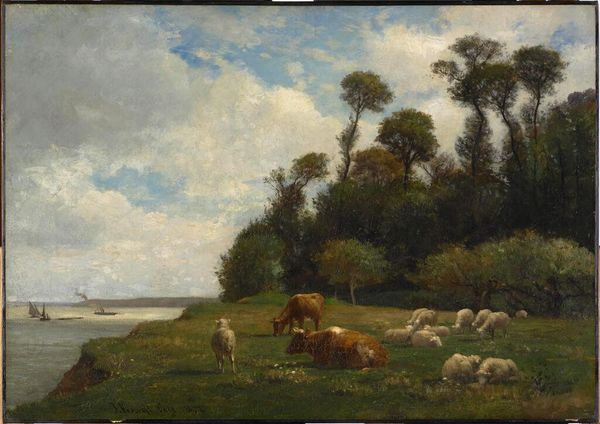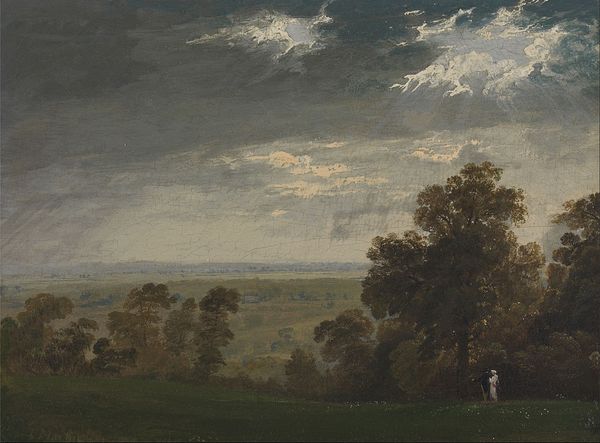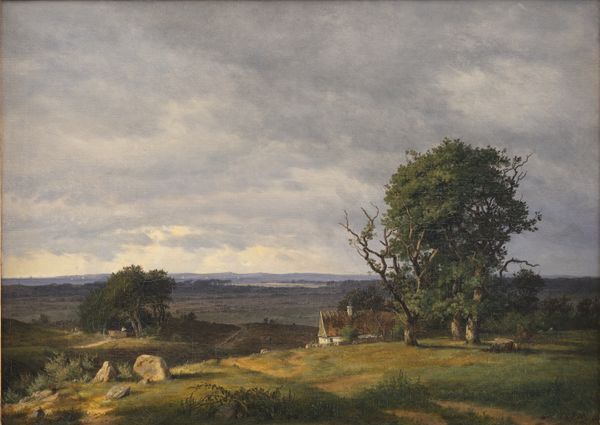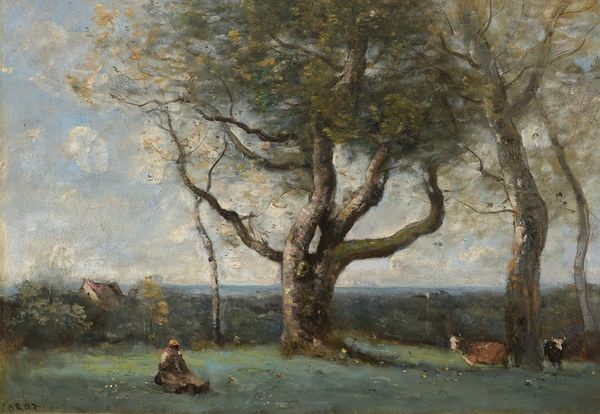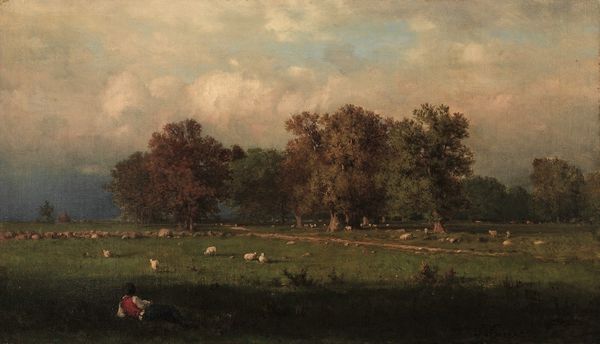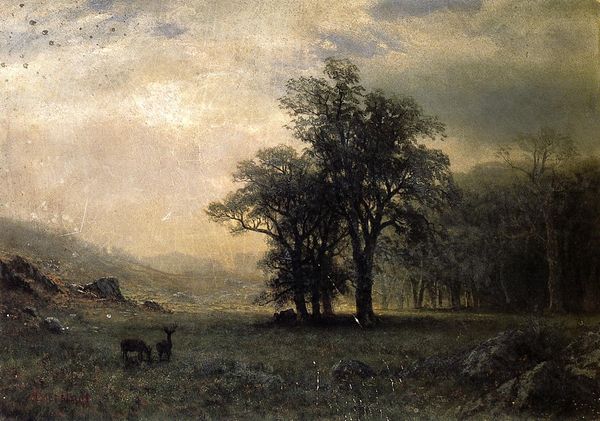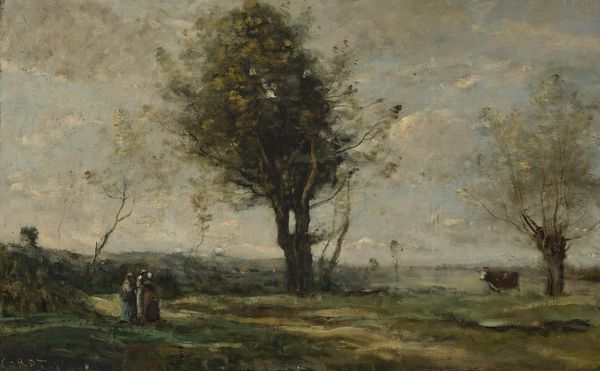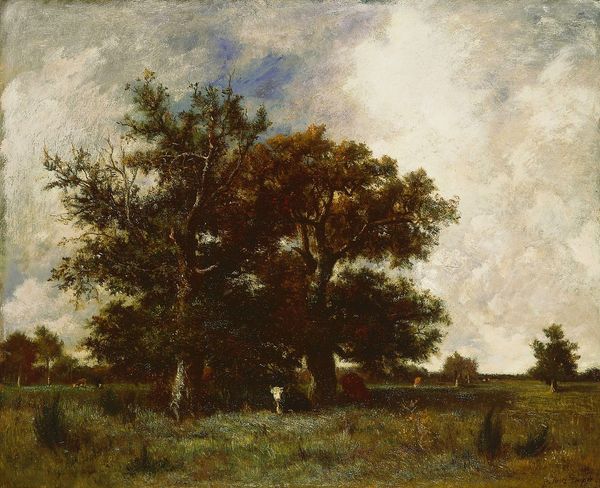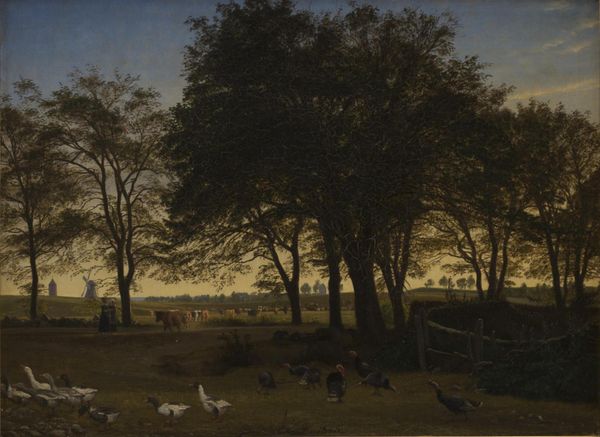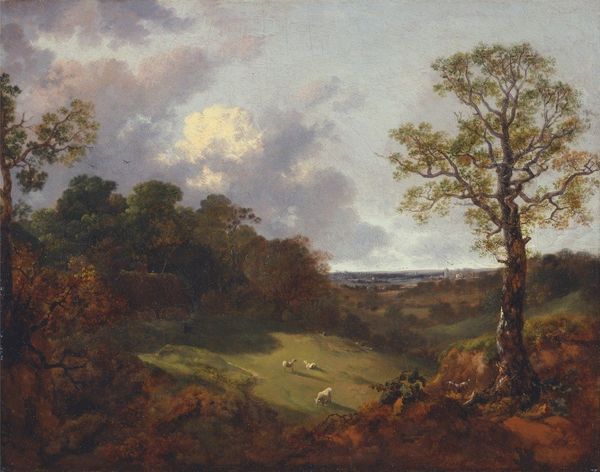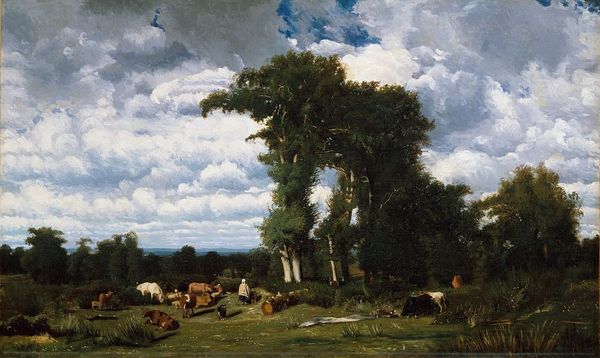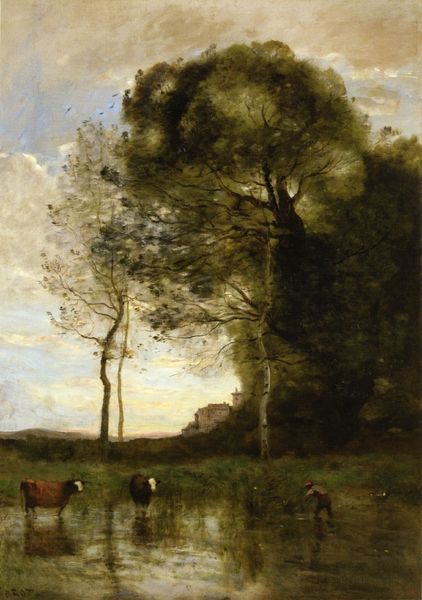
painting, plein-air, oil-paint
#
painting
#
impressionism
#
plein-air
#
oil-paint
#
landscape
#
oil painting
#
genre-painting
#
realism
Copyright: Public domain
Curator: This painting is titled "Landscape with Cows" by Jules Dupré. It’s rendered in oil paint and exemplifies plein-air techniques associated with the Impressionist and Realist movements. Editor: There’s a somber, pastoral feel, almost melancholic. The muted greens and greys dominate, but with an ethereal lightness. I'm immediately drawn to the contrast between the roughly painted sky and the more carefully rendered foreground details of the cows. Curator: Right, let’s consider the material context. Dupré was one of the key figures in the Barbizon School, artists who advocated painting directly from nature. This approach influenced the Impressionists, but the labor involved shouldn't be overlooked: transporting canvases and paints into the landscape, wrestling with the elements to capture fleeting moments. Editor: Absolutely. Think about what it meant to depict rural life at that moment, not through idealized pastoral tropes, but as scenes of laboring bodies – cows, but also human figures – embedded in a particular landscape and society. Are we seeing the quiet, mundane reality of animal agriculture being given a certain... gravitas? Curator: Gravitas and visibility. The brushstrokes are loose, yet he defines the forms well. This allows him to give volume to these very bovine subjects, while using atmospheric perspective to create an immersive sense of depth. Editor: The positioning, too—how the cows are interspersed between shadow and light—suggests both tranquility and a commentary on humanity’s place in this rural system of agriculture. Who is truly at leisure in this field, and who is compelled by economic forces? There's an unease just below the surface. Curator: And speaking to this surface, consider Dupré's engagement with materiality. There’s clear attention paid to texture in the application of the oil paint, but also, notice how he handles the light. The illumination across the field gives shape to forms, even as it dissolves others in misty obscurity. Editor: This all underscores how crucial it is to not only perceive nature but to interpret how the relationship between nature, rural communities, and land management played out politically, historically, and socially in mid-19th century France. Curator: This piece reveals not just a bucolic scene, but a crucial shift in how artistic production engaged with the rapidly changing landscape. Dupré challenges the norms of academic landscape painting, inviting us to acknowledge the toil embedded within its making and within the depicted agrarian world. Editor: Yes, this painting isn’t just about cows and trees; it prompts reflections about working conditions, rural societies, and their representations through time. It resonates even today when discussing labor ethics, environmental ethics, and access to landscapes.
Comments
No comments
Be the first to comment and join the conversation on the ultimate creative platform.
